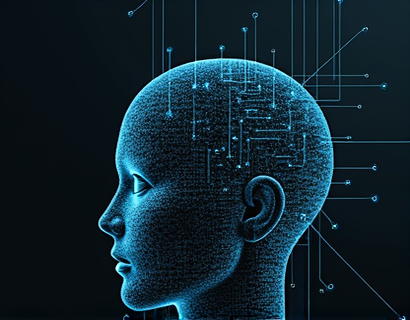Transforming Healthcare Communication: The Power of AI-Driven Chat Interfaces in Intensive Care Units
The integration of artificial intelligence in healthcare, particularly within Intensive Care Units (ICUs), marks a significant advancement in patient care and operational efficiency. An AI-powered chat interface emerges as a pivotal tool, offering real-time access to comprehensive ICU knowledge and enhancing decision-making processes for all stakeholders involved. This technology not only streamlines communication but also ensures that critical information is instantly available, thereby improving outcomes in critical care settings.
Enhancing Patient and Caregiver Communication
The primary goal of implementing an AI-driven chat interface in ICUs is to bridge the communication gap between patients, their caregivers, and healthcare professionals. Traditionally, the complex nature of ICU information has posed challenges in effectively conveying vital data to those who need it most. With this innovative solution, patients and caregivers can receive clear, concise, and timely updates about a loved one's condition, treatment plans, and any changes in their status. This transparency fosters trust and empowers families to make informed decisions regarding their loved ones' care.
Real-Time Insights for Informed Decision-Making
One of the most significant benefits of an AI chat interface is its ability to provide real-time insights. Healthcare professionals can access the latest patient data, lab results, and treatment protocols instantly. This immediacy is crucial in ICUs where every minute counts. For instance, a nurse can quickly check the AI system for updates on a patient's vital signs or medication schedule without needing to consult multiple databases or manual records. This streamlined access to information enables faster and more accurate decision-making, potentially saving lives.
Empowering Healthcare Professionals
For healthcare professionals, the AI chat interface serves as an indispensable tool that enhances their workflow and decision-making capabilities. Doctors and nurses can use the system to retrieve detailed patient histories, review complex medical literature, and stay updated on the latest clinical guidelines. The AI's ability to process and present information in a structured and easily digestible format saves valuable time, allowing medical staff to focus more on patient care. Additionally, the chat interface can assist in identifying potential issues early by analyzing patterns and alerting staff to any anomalies in patient data.
Improving Operational Efficiency in ICUs
The operational efficiency of ICUs is significantly bolstered by the implementation of an AI chat interface. Administrative tasks such as scheduling, resource allocation, and staff coordination become more manageable. For example, an administrator can quickly check the availability of critical equipment or beds, ensuring that resources are used optimally. The AI can also help in managing patient flow by predicting peak times and suggesting adjustments to staffing levels accordingly. This proactive approach not only improves patient care but also reduces operational costs.
Enhancing Security and Privacy
In the realm of healthcare, data security and patient privacy are paramount. The AI chat interface is designed with robust security measures to protect sensitive information. Encryption protocols ensure that all data transmitted through the system is secure, and access controls restrict information to authorized personnel only. Compliance with regulations such as HIPAA is maintained, ensuring that patient data remains confidential and secure. This level of security builds trust among users and reinforces the reliability of the system.
Facilitating Multidisciplinary Collaboration
The AI chat interface fosters better collaboration among the multidisciplinary teams involved in ICU care. Physicians, nurses, pharmacists, and other healthcare professionals can communicate seamlessly through the platform, sharing insights and coordinating care plans. The AI can facilitate this by summarizing key points from discussions, tracking action items, and ensuring that all team members are on the same page. This collaborative environment enhances the quality of care and reduces the risk of errors.
Supporting Continuous Learning and Professional Development
For healthcare professionals, staying updated with the latest medical knowledge is essential. The AI chat interface can serve as a valuable resource for continuous learning. It can provide access to the latest research articles, clinical guidelines, and educational modules. Nurses and doctors can ask the AI for summaries of recent studies or best practices in specific areas of ICU care. This constant flow of information helps professionals enhance their skills and provide the best possible care to patients.
Personalized Patient Experiences
The AI chat interface can also tailor interactions based on individual patient needs and preferences. By analyzing patient data, the AI can offer personalized updates and recommendations. For example, it can provide educational materials tailored to a patient's condition or suggest coping strategies based on similar cases. This personalized approach not only improves patient satisfaction but also contributes to better health outcomes by ensuring that patients understand their condition and treatment plans.
Challenges and Considerations
While the benefits of an AI-driven chat interface in ICUs are substantial, there are challenges and considerations to address. One key issue is the need for thorough training to ensure that all users can effectively utilize the system. Healthcare professionals must be comfortable with the technology to maximize its potential. Additionally, the integration of AI with existing healthcare systems requires careful planning to avoid disruptions. Continuous monitoring and updates are necessary to maintain the system's accuracy and reliability.
Future Prospects
The future of AI in healthcare, particularly in ICUs, holds immense potential. As technology advances, the capabilities of AI chat interfaces will expand. Integration with wearable devices and remote monitoring systems can provide real-time health data, enabling proactive care. The AI can also predict patient deterioration by analyzing trends in vital signs and other metrics, allowing for early intervention. Furthermore, the development of more sophisticated natural language processing will enhance the conversational aspect of the chat interface, making interactions more natural and intuitive.
Conclusion
The implementation of an AI-powered chat interface in ICUs represents a transformative step in healthcare technology. By providing real-time access to comprehensive information, enhancing communication, and supporting informed decision-making, this tool significantly improves patient care and operational efficiency. As the technology continues to evolve, its role in shaping the future of healthcare will only become more prominent. Embracing such innovations is essential for healthcare providers aiming to deliver the highest standard of care in increasingly complex medical environments.










































